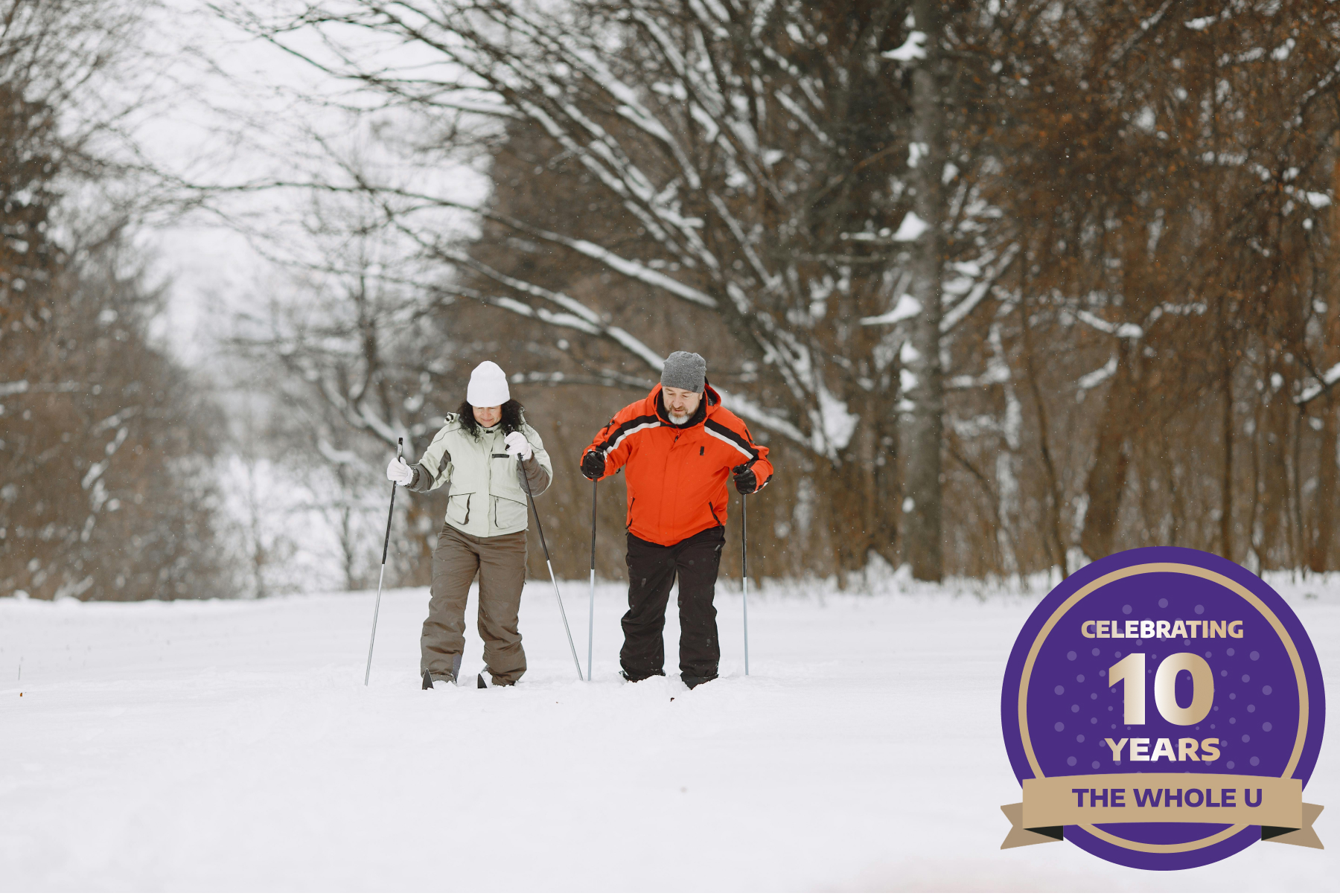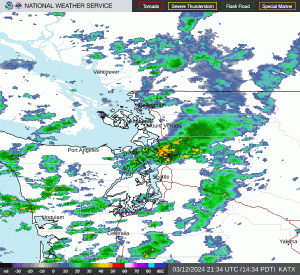
From snow to mud: how to stay safe during springtime outings
As winter gracefully bows out and spring beckons with its blooming beauty, outdoor enthusiasts across the Pacific Northwest are gearing up for some much-needed adventure. But let’s face it: just because the rain jackets might stay tucked away doesn’t mean it’s time to let our guard down. Spring outings bring their own share of surprises and challenges, whether you’re a seasoned pro or just dipping your toes into the wilderness. Fear not! In this article, we’ve got you covered with seven tried-and-true tips to keep you safe and sound during your next spring escapade.
1. Check weather conditions

So, you’re all set for your spring adventure. But before you hit the trails, don’t forget to check the weather forecast! Spring weather is notorious for its unpredictability, so keeping an eye on those forecasts is key. Be sure to pack a versatile wardrobe, including layers that can be added or removed as needed. And don’t skimp on the rain gear.
After all, you never know when those April showers might decide to make an appearance! And remember, safety always comes first. If the forecast is calling for severe weather or conditions are less than ideal, it’s best to postpone your outing. There will always be another day to explore the great outdoors, but your safety is non-negotiable.
2. Plan your route carefully
Now, let’s talk about planning your route — it’s a crucial step in ensuring a smooth and enjoyable springtime adventure. Start by doing your homework and researching trail conditions and closures. With the thawing snow and potential flooding, it’s essential to stay informed about any obstacles or hazards you might encounter along the way. When selecting your route, opt for trails at lower elevations or those with southern exposures, as they tend to thaw and dry out more quickly. And don’t be afraid to get creative! Considering alternate routes or shorter loops can help you avoid areas prone to flooding or impassable terrain, ensuring a safer and more enjoyable experience for you and your fellow adventurers.
3. Wear proper footwear
When it comes to gearing up for your springtime adventure, don’t underestimate the importance of proper footwear. Opt for waterproof, sturdy hiking boots with excellent traction to tackle muddy and slippery terrain with confidence. And here’s a pro tip: consider using gaiters to keep mud and water from sneaking into your boots and dampening your spirits. It’s also a smart idea to pack an extra pair of socks just in case your feet do end up getting wet during the hike.
 Plus, here’s a special perk for UW employees: take advantage of the Gear Garage located on the 1st floor of the Waterfront Activities Center. Simply head through the breezeway towards the lake, enter the building at the boat rental office, and find us just down the hall and to the right. It’s a fantastic resource where you can rent all the gear you need for your outdoor adventures, from hiking boots to camping equipment — all without needing a Rec membership.
Plus, here’s a special perk for UW employees: take advantage of the Gear Garage located on the 1st floor of the Waterfront Activities Center. Simply head through the breezeway towards the lake, enter the building at the boat rental office, and find us just down the hall and to the right. It’s a fantastic resource where you can rent all the gear you need for your outdoor adventures, from hiking boots to camping equipment — all without needing a Rec membership.
4. Prepare for snow and ice
It’s essential to be prepared for encounters with lingering snow and icy patches. Equip yourself with microspikes or crampons to provide traction on slippery surfaces, ensuring you maintain stability and confidence with each step. Additionally, consider utilizing trekking poles for extra support and balance, especially when navigating tricky terrain. Remember to exercise caution when crossing snow bridges or traversing steep slopes, as avalanche risk may still be present in certain areas. By staying vigilant and equipping yourself with the right gear, you’ll be well-prepared to tackle whatever snowy or icy conditions come your way during your springtime adventures.
5. Bring essential gear
Before embarking on your springtime adventure, ensure you have all the essential gear to keep you safe and comfortable throughout your journey. Pack a map, compass or GPS device to navigate through potentially obscured trails due to snow or mud, providing you with peace of mind and ensuring you stay on course. Don’t forget to stay hydrated and energized by carrying sufficient water and snacks to fuel your body during your outing.
Christopher Van Tilburg of Crag Rats Search & Rescue recommends that everyone, “have enough things in your backpack to spend a night out in an emergency situation.”
Additionally, be prepared for the unexpected by bringing along a first aid kit and emergency supplies to address any accidents or delays that may arise. By packing these essential items, you’ll be equipped to handle whatever challenges the spring wilderness throws your way, ensuring a safe and enjoyable outdoor experience.
6. Leave no trace
When venturing into the wilderness this spring, it’s crucial to practice “Leave No Trace” principles to minimize our impact on the environment and preserve the beauty of natural landscapes. As advocated by the Washington Trails Association, staying on designated trails is essential to minimize damage to fragile vegetation and ecosystems, ensuring that future generations can also enjoy these pristine areas. Additionally, remember to pack out all trash and waste, including toilet paper, as every little bit helps in preserving the integrity of our wilderness.
Let’s also be mindful of wildlife, especially during the vulnerable spring breeding season, by avoiding disturbance and giving them the space they need to thrive. By practicing Leave No Trace, we can all do our part in protecting the places we love and ensuring they remain wild and unspoiled for years to come.
7. Tell someone your plans
Before embarking on your springtime adventure, it’s essential to share your plans with a trusted friend or family member. Let them know your intended route and expected return time so that they can raise the alarm if you don’t check in as scheduled. This simple precaution ensures that someone is aware of your whereabouts and can initiate a search and rescue operation if necessary. Upon your return, be sure to check in with them to confirm your safe arrival back home.
For added peace of mind, consider carrying a personal locator beacon (PLB) or satellite communicator, which can be invaluable in emergencies when cell phone coverage is unreliable or nonexistent. By taking these steps, you’ll not only enhance your own safety but also provide reassurance to your loved ones while you explore the great outdoors.
As we wrap up our discussion on safe springtime outdoor activities, it’s essential to recap the key tips that will ensure your adventures are enjoyable and hazard-free. From checking weather forecasts to packing essential gear and practicing Leave No Trace principles, preparation, awareness, and respect for nature are paramount. As we transition from winter to spring, let’s remember to tread lightly on the trails, minimizing our impact on the fragile ecosystems we’re privileged to explore.
By following these guidelines, we can all play a part in preserving the beauty of our natural landscapes for generations to come. So, whether you’re embarking on a leisurely hike or tackling a challenging backcountry excursion, remember to stay safe, stay informed, and most importantly, savor every moment of the breathtaking beauty that springtime in the outdoors has to offer.